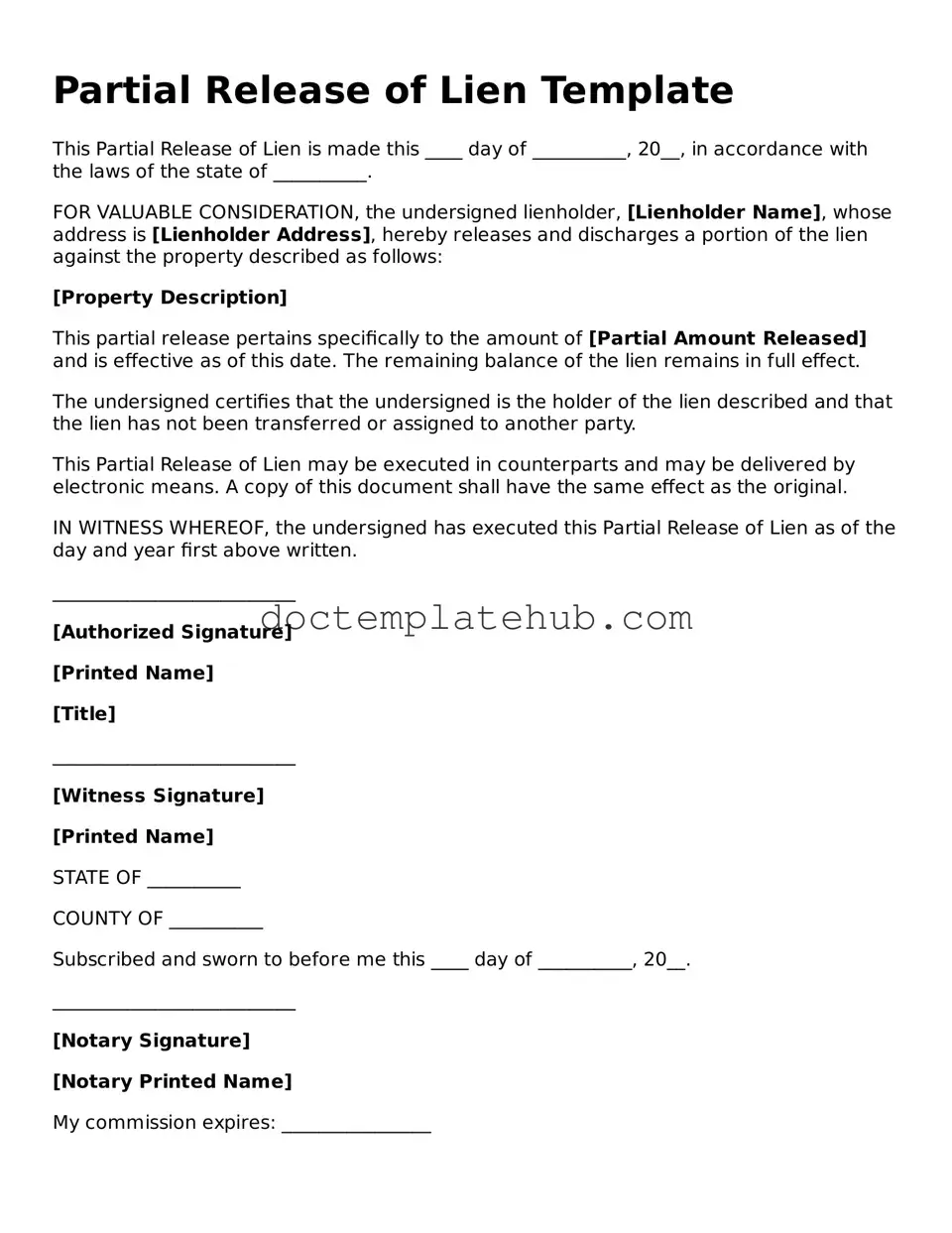The Partial Release of Lien form shares similarities with the Release of Lien form, which serves to eliminate a lien entirely. Both documents are used in real estate transactions and construction projects to clarify the status of a property. While the Partial Release of Lien indicates that a portion of the lien is being removed, the Release of Lien completely discharges the lienholder's claim against the property. This distinction is crucial for parties involved in a transaction, as it affects their rights and obligations regarding the property in question.
Another related document is the Lien Waiver. A Lien Waiver is often used by contractors and subcontractors to assure property owners that they have been paid for their work. Like the Partial Release of Lien, it provides a level of assurance to the property owner. However, a Lien Waiver typically waives all claims for payment up to a certain date, while a Partial Release of Lien only releases a portion of the lien, allowing for ongoing claims for unpaid amounts. Both documents help facilitate trust in financial transactions related to property improvements.
Understanding various lien-related documents is crucial for property owners, particularly in maintaining clarity regarding financial obligations and ownership rights. For example, the https://documentonline.org/blank-fedex-release is an essential tool to facilitate the release process when necessary, ensuring actions taken are in the best interest of all parties involved.
The Subordination Agreement is also similar in purpose, as it adjusts the priority of liens on a property. This document allows a junior lien to take priority over a senior lien, which can be beneficial in financing situations. While a Partial Release of Lien focuses on releasing specific claims, a Subordination Agreement alters the hierarchy of claims against the property. Both documents play essential roles in real estate financing, ensuring that parties understand their rights and the order of claims against a property.
Another comparable document is the Satisfaction of Mortgage. This form signifies that a mortgage has been fully paid off and the lender relinquishes any claim to the property. Like the Partial Release of Lien, it provides clarity and assurance to the property owner. However, the Satisfaction of Mortgage pertains specifically to mortgage loans, while the Partial Release of Lien is more commonly associated with construction-related claims. Both documents serve to clear title and provide peace of mind to property owners.
Lastly, the Notice of Completion is another document that bears resemblance to the Partial Release of Lien. This notice is filed to inform all parties involved that a construction project has been completed. It can trigger deadlines for filing liens and can help prevent future claims against the property. While the Partial Release of Lien deals with the release of specific claims, the Notice of Completion serves as a formal acknowledgment of project completion. Both documents are vital in managing the legal aspects of property development and ensuring that all parties are aware of their rights and responsibilities.
